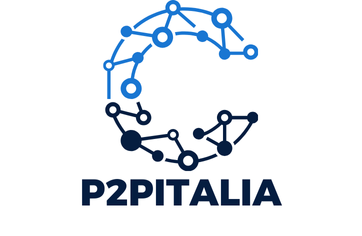Understanding AI in Financial Forecasting
Artificial Intelligence (AI) has significantly transformed the realm of financial forecasting, providing tools that enhance predictive capabilities beyond traditional methodologies. AI applications in financial forecasting include techniques such as machine learning algorithms and neural networks, which allow for more nuanced data analysis and improved accuracy in predictions. These technologies excel by processing large datasets with speed and precision, offering valuable insights into market trends and potential risks.
Precision in forecasts is crucial for effective financial decision-making. Accurate predictions enable businesses to plan better, manage risks, and allocate resources efficiently. However, achieving high precision in forecasts is challenging due to the volatility and complexity of financial markets. Financial decision-making hinges on these accurate forecasts to mitigate risks and seize profitable opportunities.
This might interest you : Enhancing Precision: Innovative Strategies to Boost AI-Powered Fraud Detection Accuracy
Despite their advantages, AI financial models face common challenges such as data quality issues, overfitting in machine learning models, and the interpretability of results. Data quality affects model accuracy, potentially leading to incorrect forecasts. Overfitting implies that a model may perform well with training data but poorly with new, unseen data. Moreover, the complexity of some AI models can make it difficult to interpret results, posing challenges for stakeholders to understand and trust the outputs. Addressing these challenges requires ongoing improvements in AI systems and the integration of domain expertise.
Data Quality Improvement Techniques
Improving data quality is paramount for achieving accurate predictions and insights, especially within financial data analysis. Ensuring data integrity is crucial as it directly impacts the predictive accuracy of models. High-quality data allows for more reliable and robust analytics, minimizing errors in financial predictions.
Also to discover : Boosting Real-Time Analytics in Smart Manufacturing: The Transformative Power of Edge Computing
To enhance data quality, several techniques should be employed, focusing on cleaning and preprocessing financial datasets. Initially, identify and rectify missing or corrupted data through imputation methods or by removing irrelevant entries. Data normalization and standardization are essential to maintain consistency across the dataset. For instance, ensuring all financial figures are in the same currency or unit scale helps in maintaining uniformity.
Preprocessing also includes handling outliers through statistical methods or removing them to prevent distortions in analysis. Leveraging sophisticated tools to assess and validate data quality before modeling is critical. Tools such as data profiling applications can detect anomalies, assess data completeness, and ensure consistency. These tools often provide dashboards for visualizing data health, allowing stakeholders to make informed decisions.
Implementing these data quality techniques results in enhanced performance assessment and generates more accurate financial insights, crucial for strategic financial planning and risk management. Repeatedly assessing data integrity elevates the overall quality and reliability of any financial dataset analysis.
Algorithm Selection for Enhanced Forecasting
In the realm of financial predictions, the choice of forecasting algorithms plays a critical role in accuracy and efficiency. Understanding different machine learning techniques can significantly aid in making informed decisions.
Forecasting algorithms such as ARIMA, LSTM, and Random Forest are frequently employed due to their unique strengths. ARIMA is preferred for time series data where a clear trend or seasonality is evident. In contrast, LSTM (Long Short-Term Memory) is a type of recurrent neural network beneficial for capturing long-range dependencies, making it ideal for complex patterns in large datasets. Random Forest, a popular ensemble method, excels in handling both numerical and categorical data, providing robust predictions even in the presence of noisy data.
Several factors dictate the choice of algorithm. Data characteristics like volume, variety, and velocity influence selection. For instance, large datasets with a non-linear nature might favor LSTM, while smaller, linear datasets could benefit from ARIMA.
Case studies highlight successful applications: A retail company leverages LSTM for demand forecasting, resulting in optimized inventory levels. In contrast, a financial institution employs Random Forest to predict stock price movements, successfully navigating market volatility.
Choosing the right forecasting algorithm tailored to your data’s unique characteristics can lead to substantial improvements in prediction accuracy and business outcomes.
Optimization Strategies for Model Performance
Effective model optimization is pivotal in enhancing AI solutions, boosting both forecast accuracy and efficiency. By applying thoughtful AI techniques, such as hyperparameter tuning, practitioners can fine-tune model outputs significantly. Hyperparameter tuning involves meticulous adjustments to parameters like learning rates and batch sizes, affecting how efficiently and accurately a model learns from data.
Another critical aspect is enhancing the training and validation processes. Techniques such as cross-validation ensure that models are neither overfitting nor underfitting the data, leading to more robust predictions. To achieve this, data is split into training and validation sets multiple times in different configurations, providing extensive insights into model performance under varied scenarios.
The importance of continuous learning cannot be overstated. AI models thrive on adapting to new data inputs and evolving patterns. Continuous learning frameworks allow models to update their responses dynamically, ensuring accuracy remains high over time. This approach, combined with regular evaluations and updates, keeps the model aligned with the latest shifts and trends, which is crucial for steadfast performance.
In essence, rigorous model optimization processes, underpinned by advanced AI techniques, forge a path to superior forecast accuracy and adaptability, meeting the multifaceted needs of modern AI applications.
Real-World Applications and Case Studies
AI forecasting models have transformed financial sectors, demonstrating remarkable success in predicting market trends. By analysing vast amounts of data, these models offer precise insights into potential future movements. For instance, many hedge funds have incorporated AI to enhance their financial forecasting, allowing them to make informed, strategic investment decisions that often outperform traditional methods.
Conversely, not all projects meet expectations; some failures highlight the importance of data integrity and model adaptability. An often-cited case involves a financial firm that relied too heavily on historical data, ignoring contemporary factors like political shifts and economic upheavals. This oversight led to forecasts that were outdated and costly.
Understanding these successes and failures underscores the value of comprehensive data analysis and innovative model adjustments. Businesses adopting these insights see enhanced strategy development and more resilient financial planning. Such transformations empower companies not only to anticipate changes but to actively shape their approaches to dynamic markets.
Ultimately, the integration of AI in financial forecasting offers a dual lesson: while the potential for success is immense, careful evaluation and continuous improvement are critical. By learning from past case studies, institutions can refine their approaches, optimising both precision and reliability in forecast projections.
Tools and Technologies for Financial Forecasting
The rise of financial tools has revolutionised the way businesses approach financial forecasting. Leading AI software, such as Alteryx and IBM Watson, enables analysts to harness big data efficiently. This software automates routine tasks, allowing professionals to focus on strategy.
Forecasting technologies continue to evolve. Machine learning algorithms, for example, can now predict market trends with greater precision. These technologies are adept at analysing vast datasets to identify patterns that might be missed by traditional methods.
Integration of AI tools into current financial systems not only optimises processes but also enhances decision-making. By combining historical data with real-time analytics, businesses can anticipate challenges and identify opportunities swiftly.
- Benefits of AI Software:
- Reduces human error
- Increases processing speed
- Provides deeper insights
The implementation of these tools requires a strategic approach. Integration must align with a company’s specific goals, ensuring that the potential of these technologies is fully realised. Regular training on these systems ensures that teams are proficient and can leverage them to their full potential. Investing in these technologies offers a way for companies to remain competitive in the dynamic world of finance.











